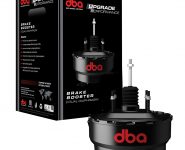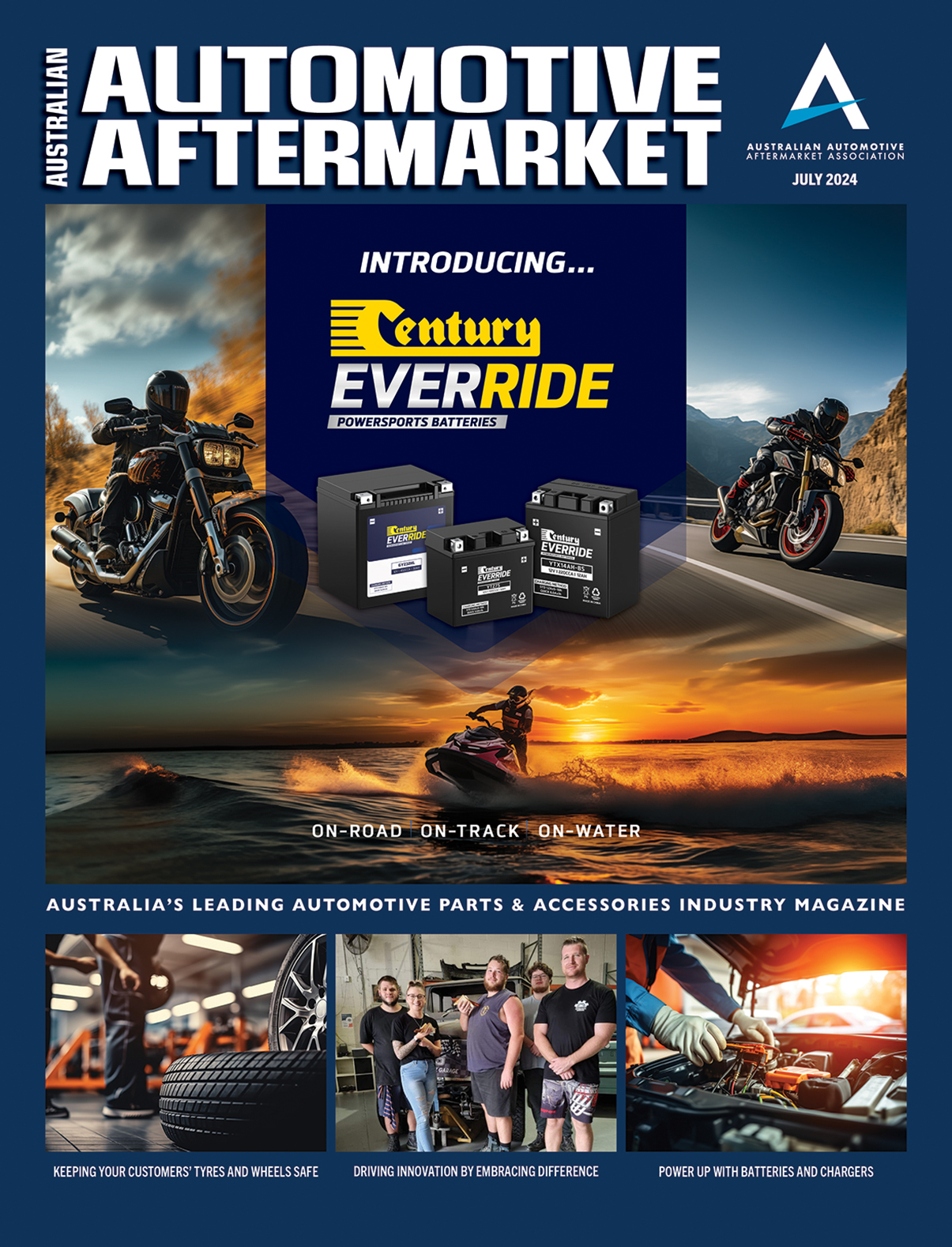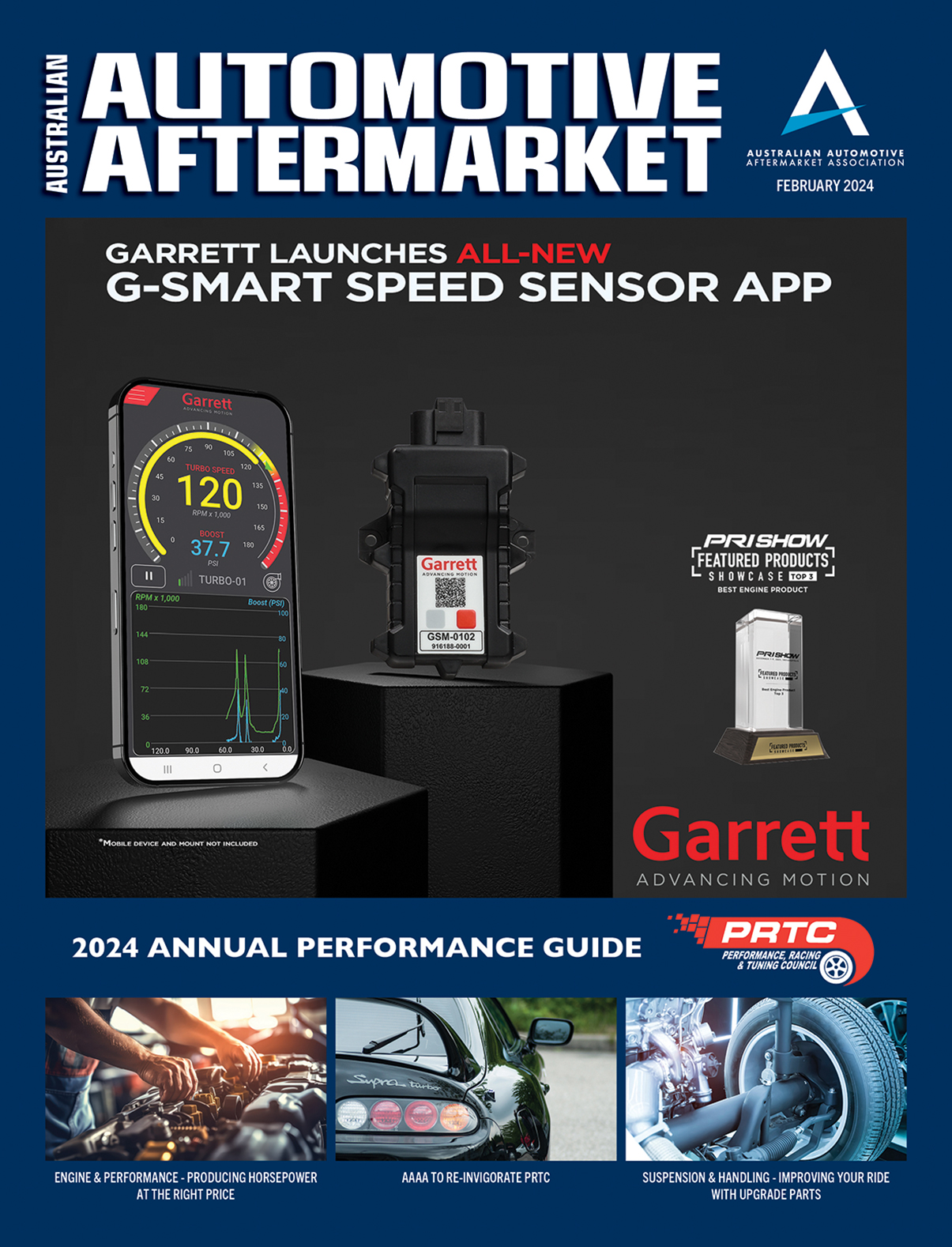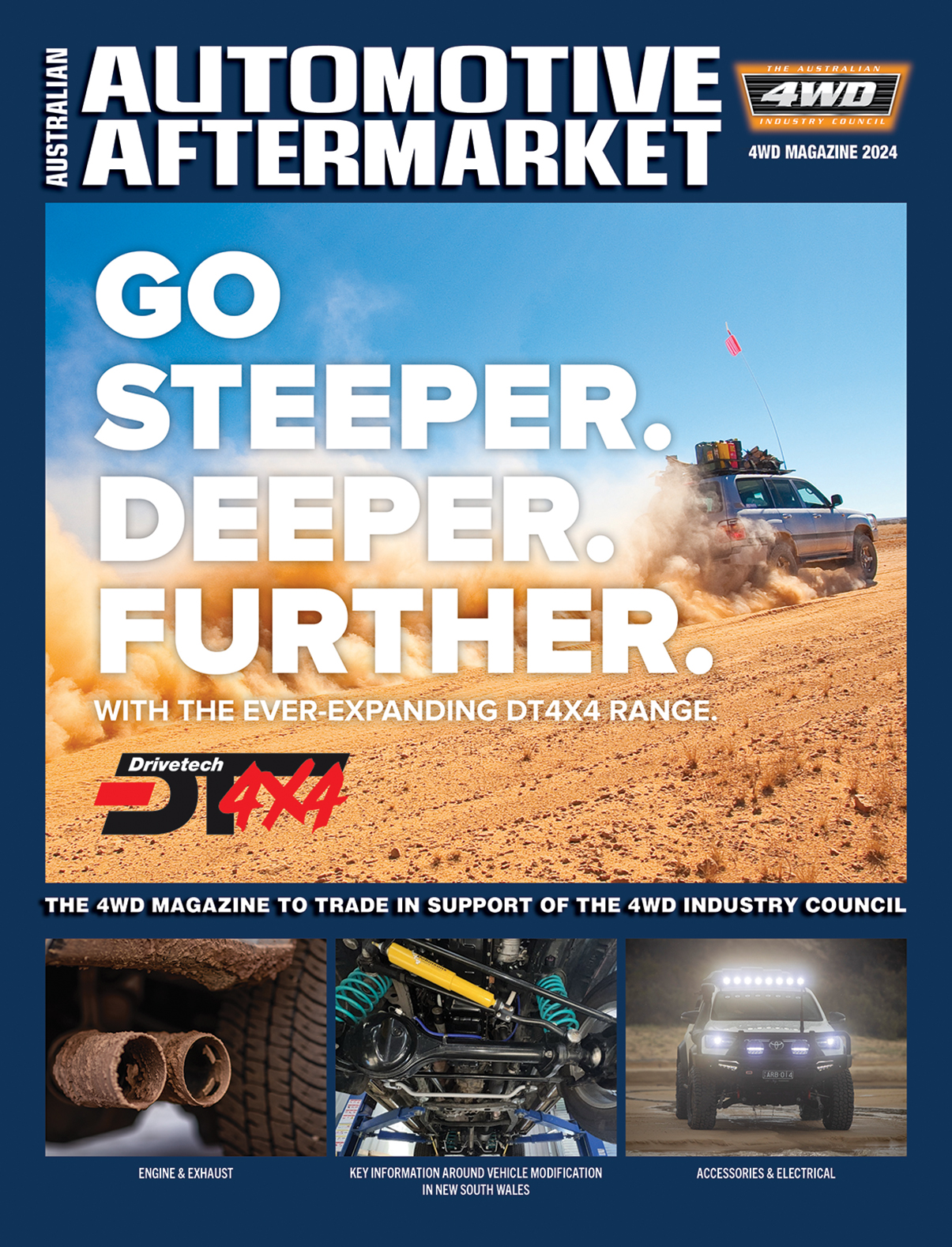NEW FROM DISC BRAKES AUSTRALIA
DBA has launched its new Street Series Hybrid Composite rotor range
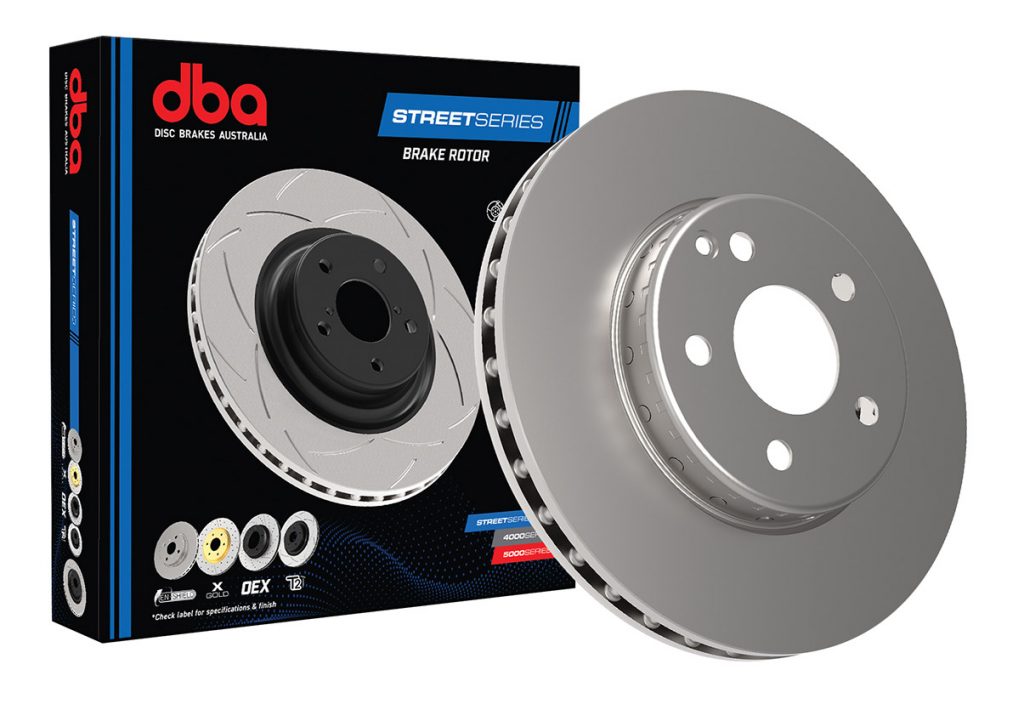
Disc Brakes Australia (DBA) states it has once again stepped up to the challenge and come up with an all-new range of Hybrid Composite (HC) two-piece rotors.
Traditional rotors, such as DBA’s Street Series or 4000 Series, are made up of a single cast iron piece.
Composite rotors, on the other hand, are composed of two separate elements: a cast iron braking surface (disc ring) and an aluminium or steel hat.
DBA says it has been a pioneer and leader in composite rotor technology for decades.
It explains that its 5000 Series continues to set the standard for two-piece performance rotors, using lightweight 6061 T6 aircraft aluminium hats and NAS bolts to join them to the disc ring.
The last 10 or so years, however, have seen some European luxury brands equipping their vehicles with a different type of composite rotor, utilising steel hats that are often fixed to the rotor ring by a number of horizontal rivets placed around the outside of the hat, or alternatively by co-casting the rotor ring onto the hat.
DBA, applying its decades-long rotor development experience, explains it has adopted this design and applied its own cast-iron composition for further enhancement.
It states that in setting its usual benchmark of at least matching, if not outperforming, the original product, the all-new Street Series Hybrid Composite rotor now offer an attractive replacement alternative to owners of those high-end vehicles.
The new range also meets R90 requirements, giving customers additional peace of mind they are purchasing a quality product.
WHY COMPOSITE ROTORS?
Using an aluminium or steel hat instead of an integral cast iron rotor may reduce the overall weight of a rotor to be by up to 15 percent, depending on diameter and hat depth.
Whilst this reduction may appear minor, it strongly affects the vehicle’s fuel consumption, performance and road handling, since the rotor is part of the unsprung weight.
This is important to understand, since the ratio between sprung and unsprung weight directly influences the behaviour of a vehicle and its ride comfort.
The ‘unsprung’ weight of a vehicle is that portion of the weight that is not supported by springs.
This would include everything that the car body is connected to, like the suspension arms, springs, shock absorbers, wheel hubs and tires, brakes and part of the weight of the axle half-shafts.
While engineering the suspension system, one of the objectives would be to have an unsprung weight that is “as low as possible”.
Effect on ride quality
A lighter unsprung mass (ie. those parts of a vehicle that are largely unaffected by the vehicle movement) is more responsive to road imperfections/undulations.
This means a lighter unsprung mass has a higher natural vibration frequency and therefore less probability to resonate with road imperfections.
Essentially, there is improved absorption of energy from the road vibrations, thus providing a better isolation to the sprung mass (those parts subject to pitching and rolling depending on road condition, ie. the vehicle body).
Effect on handling and performance
For the very same reasons lower unsprung mass improves ride comfort, it also improves vehicle handling.
The suspension system’s ability to respond to surface vibrations and cornering loads is improved by the lower unsprung mass.
Effect on fuel consumption
Lower unsprung weight is advantageous when it comes to acceleration and braking.
Since wheels, tyres and brakes are not only accelerated in a linear but also in a rotational motion, their mass has a disproportionately large effect on the amount of energy required from the engine.
Even small weight savings in the unsprung mass improve the vehicle’s fuel efficiency and emission level.
Materials and manufacturing
In the new DBA steel-hatted Hybrid Composite rotors, the pressed steel and processed aluminium hats provide efficiencies in manufacturing, offering cost savings that ultimately benefit the vehicle owner.
Additional durability is another direct benefit, as the steel provides for higher tensile strength over standard cast rotor systems.
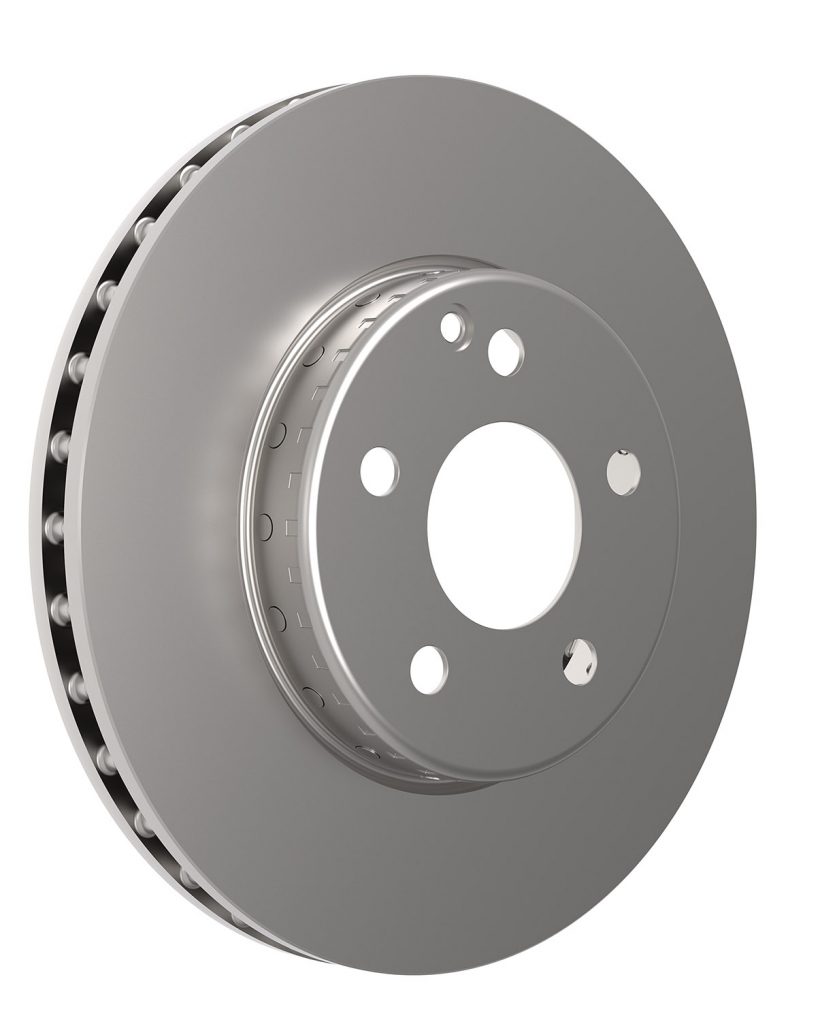
OUTPERFORMING THE REST
DBA says it is once again demonstrating it has listened to market demands by introducing a high-quality OE-replacement product that outperforms comparable OE mono-cast replacement rotors.
Sold under the Street Series label, it says it offers drivers of high-powered luxury vehicles a value-for-money option to restore braking performance at the fraction of the cost of the ‘original’ part.
For drivers seeking even more advanced braking comfort and performance, DBA explains that likewise, it continues to expand its range of 5000 Series two-piece high-performance rotors.
As well as its range of brake rotors, DBA manufactures, designs and markets globally a comprehensive range of aftermarket and OE-replacement brake drums, brake pads and shoes, brake cylinders, calipers, brake hoses and fluids, sensors and other ancillary items.
Since 2018 DBA has been owned by ASX-listed GUD Holdings Limited, one of Australia’s leading conglomerates of automotive aftermarket product brands.
With its unparalleled technical expertise, DBA says it not only engineers and manufactures the most comprehensive program of disc rotors and drums, but offers a complete range of brake pads and shoes, calipers, brake fluids, sensors and other ancillary items.
DBA explains that its product range covers more than 97 percent of the Australian car parc, with direct replacement disc rotors and pads applications catering for street vehicles, performance upgrades, towing, 4×4, SUV, military/armoured vehicles, track and motorsport applications.
While proud of its Australian roots and its local achievements, DBA over time has truly grown into a global player, servicing the world through eight distribution centres across Australia, New Zealand and the USA, distributors on all continents, and exporting to over 30 countries.
To learn more, visit www.dba.com.au or call 1800 730 039.






